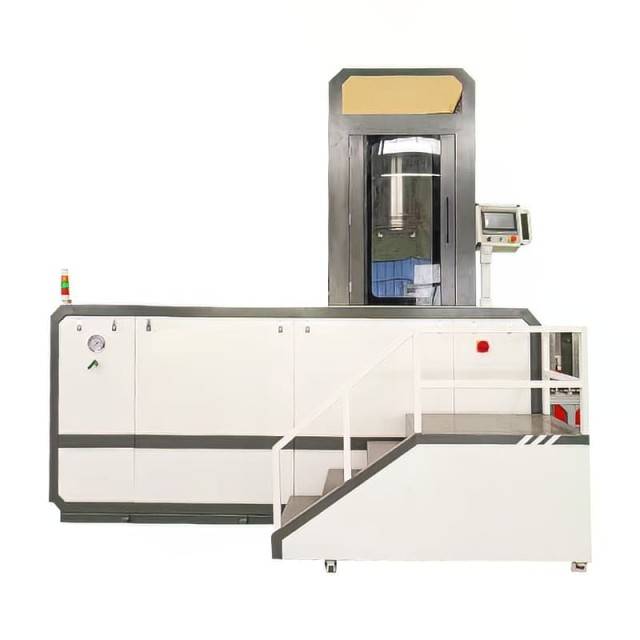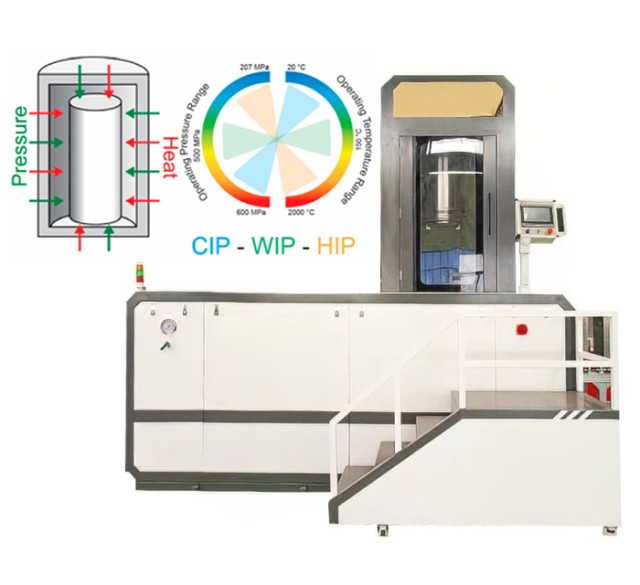Introduction
Warm Isostatic Pressing (WIP) is a high-pressure technique used to enhance the density and reduce the defects of materials. It involves subjecting a material to high pressure and high temperature while simultaneously applying an inert gas, which uniformly compresses the material. The process is particularly useful for materials that are difficult to shape and have a high risk of defects, such as ceramics, metals, and composites. WIP can improve the mechanical, physical, and chemical properties of the materials, making them highly suitable for use in various applications, including aerospace, medical, and automotive industries.
Table of Contents
What is Warm Isostatic Pressing?
Warm Isostatic Pressing (WIP) is a specialized technique used to produce high-density and low-defect materials. This process involves placing a material into a pressure vessel, which is then filled with a pressurized gas, typically argon. The vessel is heated to a temperature above the material's recrystallization temperature, but below its melting point, which softens the material.

The Process of Warm Isostatic Pressing
The pressurized gas applies an isostatic force on the material, pushing it into a mold, thereby creating a highly dense and uniform material. Warm isostatic pressing is a variant of cold isostatic pressing (CIP) that includes a heating element. It employs warm water or a similar medium to apply uniform pressure to powdered products from all directions.
Advantages of Warm Isostatic Pressing
One of the biggest advantages of WIP is that it produces materials with very few defects. The isostatic force applied during the process ensures that the material is uniformly compressed, eliminating any voids or defects that may have been present in the original material. This results in a material that has superior mechanical properties, such as higher strength and durability.
WIP is commonly used in the aerospace, medical, and energy industries, where high-performance materials are required. This process can be used to create materials that are resistant to extreme temperatures, pressure, and corrosion, making them ideal for use in harsh environments. Additionally, WIP can be used to produce complex shapes and parts with a high degree of accuracy, making it a popular choice for manufacturing critical components.
The Difference Between Cold Isostatic Pressing and Warm Isostatic Pressing
Cold isostatic presses, warm isostatic presses, and hot isostatic presses are a type of equipment that uses high-pressure gases to process materials. They are based on the principle of heating or cooling the gas to a certain temperature and then applying a uniform pressure to the material through a closed vessel. This method can improve the density, structure, and properties of materials and is suitable for ceramics, metals, composites, etc.
The main difference between cold isostatic presses, warm isostatic presses, and hot isostatic presses is their high and low temperatures during forming and consolidation. Cold isostatic presses are generally used in a room temperature environment and are suitable for temperature-sensitive materials such as ceramics, metal powders, etc. Warm isostatic presses work at medium temperature and are suitable for materials with certain requirements on temperature, such as plastics, rubber, etc. The working temperature of a hot isostatic press is high temperature, suitable for materials with high-temperature requirements, such as metals, alloys, etc.
In conclusion, Warm Isostatic Pressing is a specialized technique that produces high-density and low-defect materials that are used in a variety of industries. This process involves heating a material to a specific temperature and applying an isostatic force to create a uniform and highly dense material. The advantages of WIP include its ability to produce complex shapes with high accuracy, resistance to harsh environments, and superior mechanical properties.
Benefits of Warm Isostatic Pressing
Warm Isostatic Pressing (WIP) is an advanced manufacturing technique that has several benefits for the production of high-density and low-defect materials. In this section, we will explore some of the benefits of WIP in detail.

Higher Density
WIP can produce materials that have a higher density than those produced by other methods. This is because the high pressure and temperature of the process force the powders to fuse together, creating a more compact, dense material. The result is a material that is stronger, more durable, and has better mechanical properties.
Lower Defect Density
WIP can produce materials that have a lower defect density than those produced by other methods. This is because the high pressure and temperature of the process can help to eliminate voids and other defects in the material, resulting in a more homogeneous and defect-free material. The result is a material that has better dimensional stability, improved fatigue resistance, and better corrosion resistance.
Wide Range of Compositions and Properties
WIP can be used to produce materials with a wide range of compositions and properties. This makes it an ideal process for the production of advanced materials, such as ceramics, composites, and metals, which require precise control over their composition and properties. The result is a material that is tailored to specific applications, with properties that are optimized for that application.
Improved Mechanical Properties
Materials produced by WIP have improved mechanical properties such as impact resistance, ductility, and fatigue strength due to the internal porosity elimination. The fine-grain structure of the material also achieves part uniformity leading to isotropic properties. The result is a material that is stronger, more durable, and has better mechanical properties.
Reduced Scrap and Losses
Using WIP as an integral part of the manufacturing process reduces scrap and improves yield. Castings treated by WIP have internal porosity defects repaired, lighter designs, products with better ductility and toughness, reduced property fluctuations, longer service life, and the ability to form metallurgical bonds between different materials. The result is a more cost-effective and efficient manufacturing process.
In summary, Warm Isostatic Pressing (WIP) is an advanced manufacturing process that offers several benefits for the production of high-density and low-defect materials. Its ability to produce materials with a higher density, lower defect density, improved mechanical properties, a wide range of compositions and properties, and reduced scrap and losses make it an important technology for the development of advanced materials for a variety of applications.
Conclusion
In conclusion, warm isostatic pressing offers a range of benefits for producing high-density and low-defect materials. The process involves applying heat and pressure to a material in a sealed container, resulting in a uniform and consistent product. Some of the benefits of warm isostatic pressing include improved mechanical properties, enhanced fatigue resistance, and reduced porosity. Different bolt, tooth, and wire winding structures can be used for medium-sized, large, and large-scale equipment, respectively. Overall, warm isostatic pressing is a reliable and effective method for producing high-quality materials for a variety of industries.
Related Products
- Warm Isostatic Press WIP Workstation 300Mpa for High Pressure Applications
- Warm Isostatic Press for Solid State Battery Research
- Cold Isostatic Pressing Machine CIP for Small Workpiece Production 400Mpa
- Electric Lab Cold Isostatic Press CIP Machine for Cold Isostatic Pressing
- Isostatic Molding Pressing Molds for Lab
















